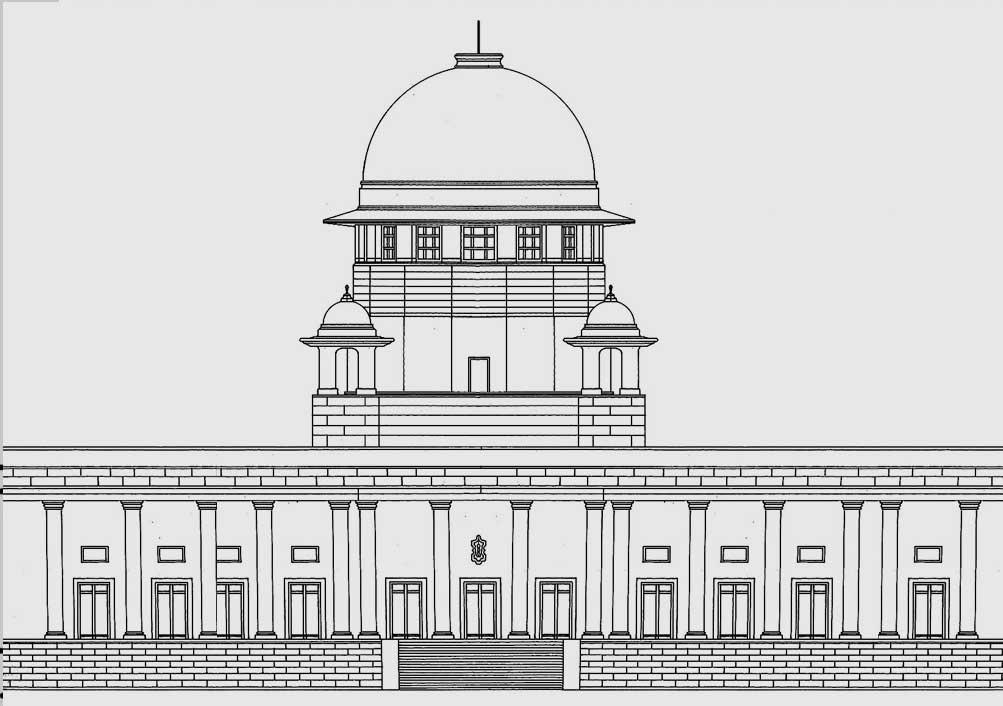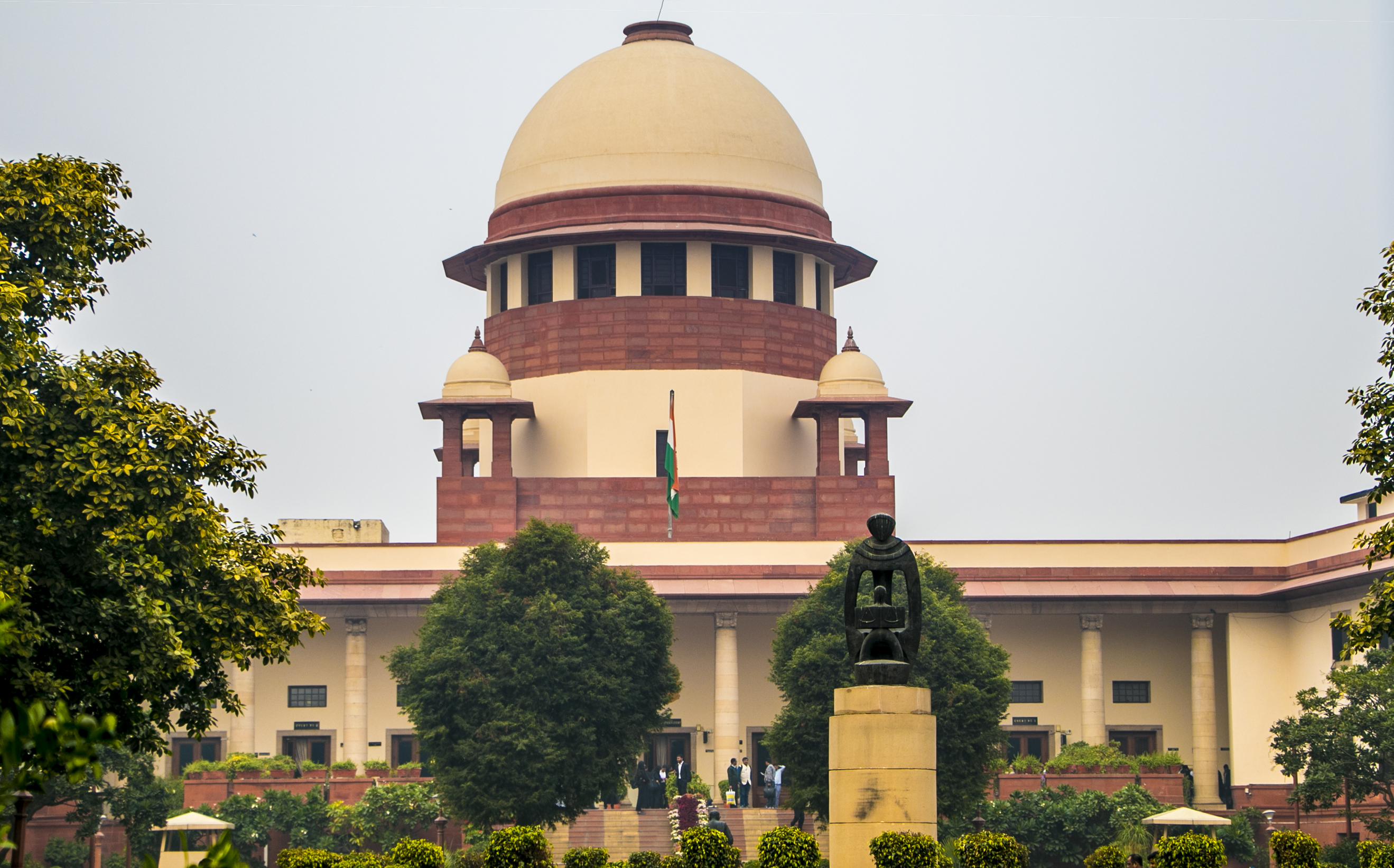In CIVIL APPEAL NO. 9941 OF 2016-SC- Following the principles of judicial discipline, lower or subordinate Courts do not have authority to contradict decisions of higher Courts: Top Court sets aside HC judgement, restores First Appellate Court’s order in suit for possession
Justices Vikram Nath & Rajesh Bindal [03-01-2024]

Read Order: MARY PUSHPAM v. TELVI CURUSUMARY & ORS
Tulip Kanth
New Delhi, January 8, 2024: In a civil matter, the Supreme Court has set aside the orders of the lower Courts with the observation that the Trial Court and the High Court, in the second round of litigation, violated judicial discipline by adopting a position contrary to the High Court’s final judgment from the first round of litigation.
The Division Bench of Justice Vikram Nath and Justice Rajesh Bindal said, “Accordingly, when a decision of a coordinate Bench of same High court is brought to the notice of the bench, it is to be respected and is binding subject to right of the bench of such co-equal quorum to take a different view and refer the question to a larger bench. It is the only course of action open to a bench of co-equal strength, when faced with the previous decision taken by a bench with same strength.”
The factual background of this case was such that the appellant instituted a civil suit for declaration of title, possession and permanent injunction against the respondents in the Court of District Munsiff-cum-Judicial Magistrate at Eraniel. The basis for filing the suit was that earlier in 1976, the respondents had filed a suit for ejectment of the appellant which was dismissed, First Appeal was dismissed and the Second Appeal was also dismissed by the High Court, vide judgment dated 30.03.1990. The same became final as it was not carried any further.
The appellant continued in possession of the property in suit. However, as the respondents were trying to interfere with the possession of the appellant, she filed the suit. The respondents contested the suit on the ground that they had purchased 8 cents of land by way of registered sale deed on 13.03.1974 which was with respect to an open piece of land and did not contain any building as such. The suit of 1976 filed by them was with respect to the constructions raised by the appellant and not with respect to 8 cents of land. The appellant had no right, title or interest over the suit property. The suit was liable to be dismissed.
The Trial Court decreed the suit for declaration of title, possession and permanent injunction but only with respect to the portion over which the house property was situated out of the total extent of 8 cents of the suit property. With respect to the other property, the suit was dismissed.
Aggrieved by the dismissal of the suit, the appellant preferred an Appeal and the Sub- Judge declared that the appellants were entitled for the entire suit property for relief of declaration of title, permanent injunction and for setting up their boundary for securing the said property. Aggrieved by this judgment, the respondents preferred second appeal before the High Court and the same was allowed. Therefore, the plaintiff approached the Top Court.
The Bench was of the view that apparently no defence was left for the respondents to take as it was already held that the appellant had perfected her rights by adverse possession over the suit property which was 8 cents of land. The construction of the appellant was standing over the 8 cents of land may be on part of it but she was found in possession of the entire 8 cents.
The respondents never sought any clarification of the findings of the High Court or the observations made therein nor did they assail the same before any higher forum. The judgement dated 30.03.1990 attained finality. “Interpreting the said judgement which was clear in itself any differently would clearly amount to judicial indiscipline. The Sub-Judge in its judgement dated 13.10.2003 had rightly observed that the Trial Court had no business to interpret the judgement of the High Court dated 30.03.1990 in any other way than what was recorded therein”, the Bench added.
The Bench also expounded on the doctrine of merger that is rooted in the idea of maintenance of the decorum of hierarchy of courts and tribunals. The doctrine is based on the simple reasoning that there cannot be, at the same time, more than one operative order governing the same subject matter. Reference was made to Kunhayammed & Ors. v. State of Kerala & Anr. [LQ/SC/2000/1013].
In the current case, the High Court’s judgment from the initial round dated 30.03.1990, noted that the disputed property included 8 cents of land, not just the building structure on it. As per the Doctrine of Merger, the judgments of the Trial Court and the First Appellate Court from the first round of litigation are absorbed into the High Court’s judgment dated 30.03.1990. This 1990 judgment should be regarded as the conclusive and binding order from the initial litigation, the Top Court observed,
“Following the principles of judicial discipline, lower or subordinate Courts do not have the authority to contradict the decisions of higher Courts. In the current case, the Trial Court and the High Court, in the second round of litigation, violated this judicial discipline by adopting a position contrary to the High Courts final judgment dated 30.03.1990, from the first round of litigation”, it said.
As per the Bench, it was nowhere recorded the actual boundary or the measurements of the property in possession of the mother of the appellant (defendant therein). The respondents- plaintiff therein had based her case on the ground that they had purchased 8 cents of open piece of land and the defendant therein had raised construction over some adjoining land, and had trespassed over part of her purchased land as such decree of possession be granted.
However, the Bench was unable to appreciate the said argument of the respondents. “Suit for possession has to describe the property in question with accuracy and all details of measurement and boundaries. This was completely lacking. A suit for possession with respect to such a property would be liable to be dismissed on the ground of its identifiability”, the Top Court noted.
Further, it was noted that if the construction by the defendant were not made over 8 cents of purchased land, then the plaintiff therein would not have a claim to possession of the same. Keeping all such aspects in view, the Bench allowed the appeal.
Sign up for our weekly newsletter to stay up to date on our product, events featured blog, special offer and all of the exciting things that take place here at Legitquest.




Add a Comment